
Nearly seven decades ago, writer and biologist Rachel Carson wisely noted, “The real wealth of the nation lies in the resources of the earth — soil, water, forests, minerals, and wildlife. To utilize them for present needs while ensuring their preservation for future generations requires a delicately balanced and continuing program, based on the most extensive research.” Her words were penned nearly two decades after the Missouri citizenry expressed this same sentiment by passage of Amendment 4, which created the Missouri Department of Conservation.
Now 85 years into our existence, MDC is more resolute than ever in the importance of our work to protect and manage the fish, forest, and wildlife resources of the state; and to facilitate and provide opportunities for all citizens to use, enjoy, and learn about these resources. We continue to base our work in scientific rigor and research, in collaboration with partners new and old, while focusing on the highest priorities in order to achieve the maximum return.
The challenges have not diminished — as witnessed through increasing droughts, floods, habitat and species loss, and more — but neither have the opportunities to do amazing conservation work, as you’ll see throughout this report.
In this year’s annual review, we highlight just a sample of the myriad conservation efforts underway as we endeavor to take care of nature, connect people with nature, and maintain the public trust. We continue to be grateful for and rely on strong citizen engagement and support in our shared conservation mission.
—Sara Parker Pauley, director
Title
State of Missouri Operating Budget
Total State of Missouri operating budget for fiscal year 2022: $34,128,012,498
MDC represents less than 1 percent of the total state budget and receives no state general revenue.
MDC FY22 Actual Receipts
MDC gets the majority of its funding through the conservation sales tax. For every $8 spent on taxable items, one penny goes to conservation.
- Conservation Sales Tax: $148,432,999
- Permit Sales: $41,185,759
- Federal Reimbursements: $35,330,861
- Sales and Rentals: $7,896,832
- Other Sources: $4,437,503
- Interest: $521,710
MDC FY22 Actual Disbursements
Funds are distributed throughout MDC to accomplish the state's top conservation priorities.
- Habitat Management: $44,298,434
- Conservation Business Services: $43,299,232
- Fish and Wildlife Management: $40,904,071
- Recreation Management: $22,850,521
- Education and Communication: $22,637,724
- Capital Improvements: $12,208,679
- Staff Development and Benefits: $6,999,488
- County Assistance Payments: $5,747,850
- Land Conservation and Partnerships: $2,365,170
NOTE: Disbursements include all operating, other agency, and capital improvements from the Conservation Commission Fund. Other agency disbursements are appropriated outside the Department of Conservation operating budget. Fuel, benefits, and other disbursements were allocated to the appropriate branches.
Source: Missouri Office of Administration
Title
MDC Takes Care of Nature
We protect and manage Missouri’s fish, forests, and wildlife, so you can enjoy healthy and sustainable resources now and in the future.
Implement Comprehensive Conservation Strategy
Conservation agencies will only meet future fish and wildlife commitments to the public within a system of healthy and connected habitats. Therefore, MDC is proactively integrating its conservation priorities with those of its partners into a common framework, which includes the identification of a prioritized network of lands and waters. The focus of the habitat-based portion of the work will be within conservation opportunity areas and subset landscapes, called priority geographies, that have specific objectives to accomplish measurable goals at a landscape level.
The Missouri Comprehensive Conservation Strategy (CCS) integrates the Missouri State Wildlife Action Plan, Forest Action Plan, and other conservation priorities into a comprehensive plan, meeting the requirements of both the U.S. Fish and Wildlife Service and U.S. Forest Service. The CCS also serves as a model framework, informing key conservation opportunities and prioritization in community conservation, public access to nature, climate change resiliency, and ecosystem services.
The Missouri CCS was approved in February 2022. This is the first time a state has combined these documents into a single framework. Missouri’s plan is serving as an example across the nation on how conservation work is completed today and into the future.
Climate Change
MDC continues to develop a climate adaptation and resilience plan integrating climate smart planning for department operations and infrastructure. This internal effort will identify and catalog existing efforts and initiatives within MDC that have an established nexus to climate adaptation and resilience that can be strengthened, as well as identification of future efforts to create adaptive operations.
Online Landowner Prescribed Fire Training
MDC’s private landowner burn workshop received a facelift in FY22. To allow participants flexibility, the course was modified from an all-day workshop to a self-paced online component and a half-day, hands-on field exercise. The online portion is offered in five units, allowing the participant to start and stop as needed. The five units cover basic fire behavior, safety, prescribed burn planning, and how to conduct a prescribed burn. The field exercise gives the participant an opportunity to assist with actual fire line preparation, igniting the burn, monitoring the prescribed burn’s progress, and other critical tasks necessary to conduct a prescribed burn safely to achieve habitat management goals. While this course was originally intended for Missouri landowners, contractors who complete the training qualify for “Certified Prescribed Burn Manager” designation, allowing them to comply with House Bill 369, which became effective in August 2021. House Bill 369 is commonly referred to as the Missouri Prescribed Burning Act. To date, over 400 individuals have initiated online course work.
Habitat Conservation Plan
MDC, in cooperation with the U.S. Fish and Wildlife Service, has developed a Habitat Conservation Plan covering 43 million acres of bat habitat for the next 50 years. This proposal would authorize “incidental take” of five vulnerable bat species as part of a habitat conservation plan covering activities associated with forest and habitat management.
MDC proposes to avoid impacts related to habitat loss by avoiding certain activities during the bats’ active maternity season. The state also will implement species habitat protection, enhancement, or restoration on 28,000 acres, including the maintenance and promotion of roost trees and foraging habitat and the protection and enhancement of caves.
Healthy Forests Providing Wildlife Habitat
In FY22, MDC focused on the care and management of forests and woods held in public trust for Missourians. Habitat management work assured forest health and provided a broad suite of forest conditions to meet a wide variety of needs for birds and other wildlife. Forest surveys were completed on conservation areas and forest management plans were developed. Using the tree data collected, work was implemented, including the control of invasive plants, harvest of wood products, and planting and thinning of trees. Use of contractors to complete forest surveys and to harvest timber was critically important in allowing MDC to complete all work in a timely and cost-efficient manner.
To elevate the safety of timber harvesters working on MDC lands, a new personal protective equipment (PPE) cost-share program was initiated in partnership with the Missouri Forest Products Association. This program helps timber harvesters secure PPE, including hard hats, eye and ear protection, and chainsaw chaps. In addition, a web-based reporting system was designed and launched to capture the location of work accomplished.
National Hydrography Dataset and National Wetlands Inventory
Statewide updates to the National Hydrography Dataset and National Wetlands Inventory continue. MDC funds were combined with the Missouri Department of Natural Resources and the Missouri Department of Transportation to purchase updated leaf-off imagery. MDC also collaborated with several other partners to create a tool designed to map changes in wetland inundation.
The wetland web series highlighted the status and direction of three foundational wetland assessments — bottomland functional assessment, life-history project, and wetland social surveys — and was shared with conservation partners. A Wetland Planning Initiative webpage was developed with the Wetland Strategic Plan and Implementation document. Three articles on wetlands also ran in the Missouri Conservationist in 2022.
Coordination with partner regulatory agencies continued on water quality topics.
Missouri hosted the Instream Flow Council biennial meeting and featured information about Missouri projects on ecological flows.
Feral Hog Elimination
The Missouri Feral Hog Elimination Partnership is made up of agencies and organizations that are committed to total elimination of feral hogs from Missouri’s landscape. In 2020, the partnership established a unified Incident Command System to manage feral hog elimination efforts in the state. Since 2016, the partnership has eliminated feral hogs from 269 watersheds in the state. These watersheds encompass approximately 6.7 million acres of land, a decrease of 60 percent of the land previously occupied by feral hogs in Missouri. During 2021, the partnership removed a total of 9,857 feral hogs from Missouri’s landscape. The highest number of feral hogs were removed from Iron County at 1,940 hogs, followed by Wayne County at 1,329 hogs, and Reynolds County at 1,268 hogs. Aerial elimination efforts were increased in 2021 with a total of 193.5 hours conducted over the course of the year, resulting in the removal of 1,954 feral hogs. Partnership staff scouted almost 3.3 million acres for feral hog damage and signs of hogs and assisted 1,308 private landowners in 2021. Anecdotal field reports from trappers indicate feral hogs are becoming rarer on the landscape and sounder sizes are decreasing, suggesting elimination efforts are having success in reducing the population of feral hogs in the state.
In fall of 2021, MDC hired nine new full-time feral hog trappers. Now at full staff, a total of 48 full-time trappers will be deployed across the state. Also in 2021, four feral hog outreach specialists were hired as part of the University of Missouri’s Extension Program to act as liaisons for the partnership. Each outreach specialist was tasked to work in counties impacted by feral hogs, and they are stationed in Ironton, Ava, Salem, and Poplar Bluff. Specific goals of the Extension Program, complimentary to efforts of the partnership, include establishing relationships with landowners in strategic locations, establishing a quarterly newsletter to improve communication, engaging local organizations (county Farm Bureaus, local Cattleman’s Associations, county commissions, soil and water conservation districts, etc.), conducting surveys and collecting data associated with feral hog damage, connecting landowners with trappers, and conducting landowner meetings and workshops. In 2021, the outreach specialists assisted in signing up an additional 39,000 acres of private land that we were able to include in aerial operations.
K-9 Unit
Since the kick-off of MDC K-9 Unit in 2021, the dogs and their handlers have provided 248 programs with a total of 11,834 program participants, and they have been involved in 134 deployments. Of those deployments, 25 of them were classified as being detection deployments while the other 109 were classified as patrol deployments. The K-9 teams have been a valuable addition to the department and have been successful in helping find evidence from numerous poaching incidents around the state, including cases for taking turkey and deer in closed season, shooting from the roadway, and trespassing.
Black Bear Hunting
Missouri’s first black bear hunting season occurred in October 2021 and resulted in a total harvest of 12 bears. The limited and highly regulated hunting season was established to provide opportunity for Missourians to participate in the sustainable harvest of this valuable natural resource. Conservative permit and harvest quotas were established for the state’s three Black Bear Management Zones to provide for sufficient hunter opportunity while allowing for continued growth of the bear population. Hunters are allowed to use firearms or archery, but the use of bait or dogs is prohibited.
Smallmouth Slam
June 2022 marked the beginning of MDC’s latest angler recognition program — the Smallmouth Slam. MDC partnered with the Missouri Smallmouth Alliance to offer this program based on the wildly popular Blue-Ribbon Trout Slam. The Missouri Smallmouth Slam honors anglers who can catch a smallmouth bass in at least six of 12 special management areas. Catch a smallmouth bass in more than six of the designated areas and your level of achievement goes up. Participants can choose to have their successes listed on the MDC website.
Paddlefish Harvest Regulation Changes
Paddlefish have historically been valued by both sport and commercial anglers, but interest in paddlefish has increased recently. Jaw bands were used to tag 9,568 paddlefish in the Mississippi and Missouri rivers and Missouri’s three large reservoirs (Lake of the Ozarks, Harry S. Truman Reservoir, and Table Rock Lake). Based on exploitation estimates and to protect immature paddlefish from harvest, the statewide length limit was increased to 32 inches for rivers while reservoirs remained at 34 inches. To alleviate concern over bycatch mortality due to elevated water temperatures, a commercial paddlefish harvest season has been established from Nov. 1 to April 15. MDC developed a definition of snagging in the Wildlife Code of Missouri and added Table Rock Lake to the regulation that no person shall continue to snag after taking a daily limit of two paddlefish.
Catfish Study, Management
Studies of blue catfish and flathead catfish in the Missouri and Mississippi rivers were prompted by concerns from some anglers about overharvest. However, fisheries research indicated that current management approaches support healthy populations and sustainable fisheries. While regulation changes are not necessary to prevent overfishing, opportunities to manage these fisheries to better meet the desires of those who prefer to catch larger fish were identified. An angler questionnaire and public comment period were offered last summer to determine Missourians’ preferences associated with catfish management. Public input indicated that catching catfish to eat is more important than catching trophy-sized catfish and that many anglers prefered to keep smaller catfish. While some anglers are interested in catching trophy-sized catfish and implementing more restrictive harvest regulations, that sentiment was not overwhelming, and public comments largely supported no change. Ultimately, no regulation change was recommended.
Hellbender Recovery
Great strides have occurred with the propagation and restoration efforts for the Ozark hellbender and eastern hellbender in Missouri. MDC, along with the Saint Louis Zoo’s Ron and Karen Goellner Center for Hellbender Conservation and support from other agencies and private citizens, work in consort to keep Missouri’s largest, aquatic salamander from extinction. Due to drastic declines in Ozark hellbender numbers, captive propagation became a priority in the long-term recovery of the species, especially augmenting populations into their natural habitat — the Ozark aquatic ecosystem.
Continued breeding of Ozark hellbenders in artificial streams occurred at the zoo, resulting in 762 hatchling hellbenders in the autumn of 2021. Zoo-breeding of the Ozark hellbender has been successful in 10 of the past 11 years. In addition, MDC staff collected hellbender eggs from five Ozark rivers, resulting in 571 hatchlings that are being raised at the zoo. Currently, the zoo is rearing over 2,000 larvae and juvenile hellbenders obtained from eggs collected in the wild and eggs obtained from zoo-breeding in previous years. During the summer of 2021, 835 Ozark hellbenders and eastern hellbenders raised at the zoo were released in their native Ozark rivers. These hellbenders are being monitored to determine the success of zoo-reared hellbenders in the wild. MDC also contributed to a substantial renovation of the breeding facility at the zoo, which will increase their capacity to rear hellbenders and improve cooling efficiency of the facility. These achievements will not only buy time to further address the decline of the species but will likely be the “safety net” needed to save this unique, native salamander of the cold-water rivers of the Ozark Highlands.
Brown-Headed Nuthatch Restoration
During the second year of the brown-headed nuthatch restoration effort, 56 birds were moved in August 2021 from Arkansas to two sites in the Mark Twain National Forest pineries south of Fremont. Between 2020 and 2021, a total of 102 nuthatches were released in Missouri. Partners at the University of Missouri, U.S. Forest Service, U.S. Fish and Wildlife Service, and MDC have conducted surveys for survival estimation across the release area monthly since November 2020. Additionally, nests were located and monitored in spring 2021 and 2022. Some breeding pairs in 2022 included unbanded birds, evidence of breeding in nuthatches fledged last year in Missouri. Future work includes continued monitoring and population viability analyses to inform whether future relocation of birds is needed to further supplement this small, restored population.
The Amphibians and Reptiles of Missouri
Whether you study herpetology or are just interested in learning more about these secretive and often misunderstood groups of animals, The Amphibians and Reptiles of Missouri is a perfect book. Updated and expanded for the first time in more than 20 years, this 522-page guide by Jeffrey T. Briggler (state herpetologist) and Tom R. Johnson (retired state herpetologist) provides a thorough update of the knowledge and taxonomy of amphibians and reptiles in Missouri. The book provides a user-friendly layout on the description, distribution, habits and habitat, breeding, and interesting remarks for 118 currently recognized salamanders, frogs and toads, turtles, lizards, and snakes.
This book is nicely complemented by numerous photographs and illustrations. There are many updated and high-resolution color photographs assisting with identification within each species account, as well as the inclusion of many of the species preferred habitat. As with the previous editions of this book, Johnson’s artwork provides esthetic appeal rarely found in state guides of amphibians and reptiles. It is available for purchase at most MDC nature centers, online at mdcnatureshop.com, or by calling toll-free 877-521-8632.
Turkey Research
Nest Success and Poult Survival
MDC’s Wild Turkey Management Program is working with the University of Missouri to determine the primary causes for declining production in Missouri’s turkey population in northern Missouri. The project will look at how weather, landscape characteristics, predator densities, and invertebrate abundance and diversity affect nest success and poult survival in northeast Missouri. The project aims to identify what habitats are most important to turkeys during the brood-rearing period and in which habitats turkeys and predators are most likely to interact. Since these factors are often studied in isolation, they provide an incomplete understanding of how they interact to influence production. The results of this project will provide a more comprehensive understanding of the dynamics influencing turkey production and abundance, further improving our communication with concerned stakeholders. The results would also inform habitat management efforts on public and private land.
Regional Harvest Rate Estimation for Wild Turkeys
MDC’s Wild Turkey Management Program is working with the University of Montana to develop a statistical population reconstruction (SPR) model for each of the wild turkey monitoring units (TMU) to monitor turkey population demographics. SPR models can use data streams — harvest data and brood survey results — to estimate vital rates and abundance but need additional data to decrease the uncertainty around those estimates. For the Ozark Boarder and Union Breaks TMU to be properly fit using an SPR model, a more accurate estimation of harvest rates for adult and juvenile male are needed. SPR models are more defensible when questions about turkey management are posed by stakeholders.
The goals of this project will be accomplished by banding 120–160 (as close to 50-50 adults to juvenile as possible) male turkeys in fiscal years 22–24. Captured males will be fit with a leg band, 60 percent of which are worth $100 if the hunter reports their harvest. Using this mark-recapture method, adequate levels of precision for the SPR model output should be achieved.
Title
MDC Connects People with Nature
We provide places for you to enjoy nature and opportunities for you to learn about and discover nature.
Expanded Bicycling and Rock-Climbing Opportunities
Cyclists and rock climbers can now get outdoors and enjoy nature on MDC conservation areas. A new MDC bicycle regulation went into effect Feb. 28, 2022, that allows bikes and some types of electric bicycles (e-bikes) on multi-use bicycle trails and most service roads. Service roads are pathways used by MDC vehicles for maintenance purposes. Learn more about biking on conservation areas at short.mdc.mo.gov/Zr9.
A rock-climbing bluff is now open at Rockwoods Reservation in St. Louis County. A dozen climbing routes were developed in partnership with the BETA Fund, a local organization of rock-climbing enthusiasts whose mission is to protect and conserve outdoor resources in the Midwest for recreational rock climbing. Learn more about rock climbing at Rockwoods Reservation at short.mdc.mo.gov/4Tv.
Kansas City Green Career Corps
In FY22, MDC entered into an agreement with Heartland Conservation Alliance (HCA) to pilot a green career corps in Kansas City. The Nature Action Crew (NAC) is focused on young, underrepresented adult populations in the Kansas City area. A total of five young adults were hired to form the NAC. The NAC program has four main goals:
- Fill a need for trained landscapers that can work with native plants in the Kansas City Metro Area.
- Provide diverse opportunities for careers in conservation for underrepresented Kansas City residents.
- Work on mutually beneficial habitat projects in the Blue River Watershed.
- Enhance the connection of underrepresented populations to nature.
HCA and their partners developed a training curriculum for the NAC members so they could work on a wide range of projects throughout the Kansas City area. These projects include wildlife-use monitoring, water quality monitoring, prescribed burning, invasive species removal, outdoor education, outreach events, planting native vegetation, and leading community workdays. This has been a great partnership to further our efforts in connecting Missourians to nature and the concept has expanded to reach other communities in the state.
The Missouri Forestkeepers Network Celebrate 25 Years
The Missouri Forestkeepers Network celebrated its 25th anniversary in FY22. The program was launched in 1996 and attracted 731 charter members. Today, the network has grown to serve more than 3,000 members throughout much of the state. These members are everyday citizens who are turning a critical and caring eye to the state’s forests while taking a hands-on approach to caring for natural resources.
Since the program’s inception, the network has been coordinated by Forest ReLeaf of Missouri and MDC. The initial goals of forestry education and statewide outreach, along with the mission of the program, “to develop a network of informed citizens working to conserve, sustain, and enhance Missouri’s urban and rural forest resources through volunteerism, advocacy and management,” still hold true today.
Over the years, the Forestkeepers Network members have contributed more than 250,000 volunteer hours, valued at $7.5 million, with members logging a remarkable 18,934 volunteer hours across the state in 2021 alone. Those hours were spent caring for countless trees, advocating for trees, participating in a strange and unique tree hunt, surveying the tree nut crop in counties, teaching in formal and informal classrooms, and countless other initiatives. Activities are underway to chart the path for the next 25 years.
Discover Nature Schools
Two new and innovative Discover Nature Schools curricula are now available. The curricula incorporate the latest teaching strategies and practices. Teachers in kindergarten and first grade can use grade-specific teacher and student guides to meet all state and national science standards for those grades. The online Teacher Portal includes digital materials to share with students. In addition, trained classroom teachers can receive transportation grants for field experiences and teacher trunks for hands-on learning.
2021 Conservation Partners Roundtable
MDC hosted its fifth annual Missouri Conservation Partners Roundtable in October 2021. With a theme of “Connected Like Never Before,” this virtual event built on recent gains in getting people outdoors during the pandemic. More than 340 partners (representing 163 organizations), students, and MDC staff participated. An opening plenary session featured keynote speaker Martha Williams, U.S. Fish and Wildlife Service, along with a panel discussion involving five nationally known speakers. Fifteen concurrent sessions were held on topics that fit the conference theme. The event concluded with a question-and-answer session with MDC leadership.
Community Forestry Funding
In FY22, $500,000 in cost-share funding was provided to communities throughout Missouri to conduct community forestry projects. The cost-share is used to fund community tree inventories, removal or pruning of hazardous trees, tree planting, training, and education. In northeast Missouri, Moberly Parks and Recreation used these funds to install four interpretive signs at Rothwell Park. The signs were installed to help visitors identify 20 different tree species along the Paul Walker Trail Loop, which leads to the park’s Meditation Garden. This park receives tens of thousands of visitors each year. More information on funding for communities can be found at short.mdc.mo.gov/4Uu.
Missouri Master Naturalist Program
Master Naturalist volunteers made considerable additions to citizen science efforts in FY22 with members of all chapters contributing data to various surveys. Information was reported on birds, butterflies, frogs, furbearers, and lady slippers.
- With several birders among their ranks, Boone’s Lick Chapter members contributed nearly 1,000 hours of volunteer service, collecting data for bird conservation efforts.
- Members of the Hi Lonesome Chapter also made a significant contribution to bird conservation efforts by monitoring 36 bald eagle nests.
Improving monarch and pollinator habitat is a high priority for the Master Naturalist Program. Leading efforts with local conservation partners, volunteers implemented a dozen new pollinator planting projects, adding over 1,100 new milkweed plants to Missouri’s landscape.
- The Loess Hills Chapter has set a challenge for themselves to plant 10,000 milkweeds at the Loess Bluffs National Wildlife Refuge over 10 years. In the most recent year, their fourth, Master Naturalists planted 1,000 milkweeds at the refuge.
Additionally, Master Naturalist volunteers connect people to nature through numerous outreach and education programs.
- Members of the Mississippi Hills Chapter connected a youth empowerment group to the sport of angling through a Discover Nature — Fishing event.
- The Great Rivers Chapter partnered with the Green Center to engage youth in nature-oriented activities through after-school programs, summer camp, and outdoor classroom projects.
- The Lake of the Ozarks Chapter worked with community partners to co-sponsor an eagle festival, which brought people of all ages outdoors to experience and learn about nature during the winter season.
National Archery in the Schools Program
The Missouri National Archery in the Schools Program (MoNASP) has grown immensely since its inception in 2006, which started with nine schools participating. To date, the department has provided training and grants to 977 schools to support implementation of the program. The teachers and partners who support the day-to-day operation of the program across the state have helped make Missouri’s program nationally recognized. Missouri holds the second largest state tournament in the nation, with over 3,000 bull’s-eye archers and 1,000 3-D archers. In recent years, Missouri schools have also become a dominant force at the national level, including a first-place team and several individual winners in 2022.
Missouri Stream Team Program
Stream Team volunteers serve as stewards for Missouri’s 110,000 miles of flowing water and do hands-on projects, such as litter pickup, water quality monitoring, storm drain stenciling, and streamside tree planting. The program is a partnership between MDC, the Conservation Federation of Missouri, and the Missouri Department of Natural Resources.
In FY22, Stream Teams throughout the state reported the following activities:
- 10,975 trees planted
- 58 habitat improvement projects
- 318 water quality monitoring trips
- 194 tons of trash removed from Missouri waterways
- 56,263 hours dedicated to protecting Missouri streams
During the past fiscal year, Stream Teams participated in several projects and activities, including the Castle Point Clean-up and the Show-Me Snails Project. The Stream Team Program partnered with the St. Louis Economic Development Partnership, Missouri American Water, Urban League of Metro St. Louis, St. Louis County Police Department, and many others to participate in the “Clean Up, Build Up” project to help clean up the trash, debris, and overgrowth of invasive species in the underserved community of Castle Point in North St. Louis County. Several 40-yard dumpsters were filled with debris by 100 volunteers in May 2022.
The Show-Me Snails project kicked off its third year of citizen engagement to collect aquatic snails for identification. This ongoing project will help develop future water quality criteria and expand existing snail distribution records for the state of Missouri. Last year, 77 Stream Team volunteers registered to help with Show-Me Snails, and 148 aquatic snail samples were submitted for identification by MDC’s Science Branch staff.
Pathways to Relevancy Project
MDC’s Relevancy Branch is leading an effort to help the agency better understand and serve the conservation-related interests of all Missourians. MDC recognizes that organizational change is necessary to fulfill the public trust responsibilities of its conservation mission — To protect and manage the fish, forest, and wildlife resources of the state; and to facilitate and provide opportunity for all citizens to use, enjoy, and learn about these resources. Building on national efforts to increase conservation relevance for everyone, in FY22, MDC convened a cross-program, multilevel Relevancy Project Team that invested in a planning process informed by social science inquiry focusing on geographies and population segments that historically have been underserved by the agency. Grounded in MDC’s strategic plan, the Relevancy Project Team identified seven relevancy goals that will serve as the foundation of MDC’s work to ensure conservation is accessible to all Missourians.
MDC Staff Volunteers
Connecting people to nature is what volunteers at MDC’s shooting ranges and outdoor education centers, nature centers, and visitor centers do daily. In FY22, these volunteers contributed 38,200 hours assisting staff with programs and activities to engage people of all ages with nature-focused experiences. In the past fiscal year, volunteers helped reach new audiences through virtual programs, which included adapting place-based programs for youth to a virtual format and engaging participants in new ways. Volunteers embraced the “one-health” concept and helped deliver programs with a focus on nature as a healthy lifestyle boost. Several volunteers celebrated 20 years of service with the department and shared their wealth of experience mentoring new volunteers.
Missouri Bumblebee ATLAS
Since 2020, the Missouri Bumblebee ATLAS survey has been conducted by more than 130 volunteers to determine bumblebee species distribution in Missouri. Over 2,300 bees have been collected and identified and habitat information recorded. The ATLAS has given us and our partners valuable insight into bumblebee nectar plant preferences and habitat needs. The bumblebee species of most concern in Missouri rely almost exclusively on native plants for nectar and pollen. In addition, they are found mostly where there is a diversity of blooming native plants. Information gained is helping design better plantings for pollinators. Bumblebees are not only important native pollinators, but the same habitat they use are also valuable for species like bobwhite quail and declining grassland birds. Sponsoring partners include the University of Missouri, The Xerces Society, and Quail Forever.
Landowner Assistance
More than 27,000 Missourians received technical and financial support to manage their land for the benefit of fish, forests, or wildlife, including over 7,000 on-site visits with landowners and communities. Approximately $2 million was provided to private landowners for habitat improvement through our Landowner and Community Assistance cost-share program, while an additional $900,000 was provided for communities in FY22.
Title
MDC Maintains Public Trust
We want you to be confident the finances dedicated to Missouri conservation are used wisely, and decisions concerning Missouri’s fish, forests, and wildlife are guided by the best available science.
Retaining a Healthy Workforce
The Conservation Commission approved increased commission contributions toward active employee health insurance premiums from 68 percent to 85 percent, effective Jan. 1, 2022. This action was taken to improve MDC’s competitiveness in an aggressive hiring market and to expand on total rewards for existing staff resulting in improved retention.
Talent acquisition in collaboration with staff statewide filled a record number of personnel transactions in FY22. During this unprecedented time, MDC maintained a 94 percent retention rate, and continued providing quality services and programs to our constituents.
Digital Bill Processing
Before the COVID pandemic and implementation of remote working, the MDC Payables team leveraged 100 percent paper documents for bill processing. The first iteration of digital bill processing was implemented within five business days, as an immediate reaction to COVID shutdown. The initial measures taken allowed for bills to be processed but was not an ideal long-term approach. MDC Payables worked with MDC Information Technology staff and the Filebound software vendor to develop a new workflow. Filebound is a web-based system MDC already used for document image storage, and it provided the necessary functionality to create workflows for managing invoice submissions and payment. MDC Payables and Purchasing teams travelled throughout the state to MDC regional offices to train staff on the new workflow. MDC is now processing documents almost 100 percent electronically and more consistently stay within the team’s paid within five business days goal. This has led to stronger relationships with our conservation partners and vendors as well as allowing for successful distributed work for our team.
Continuous Improvement Recognition
In May, MDC received Commitment Level recognition for Performance Excellence from the Quality Texas Foundation Regional Program. This recognition is for dedication and commitment to continuous improvement by completion of the Malcolm Baldridge Excellence Framework. The Baldridge Excellence Framework is a set of nonprescriptive criteria to help organizations of all types and sizes improve performance and get sustained results. The framework helps the department identify strengths and opportunities in the areas of leadership, strategy, customers, measurement, analysis knowledge management, workforce, and operations. The recognition is acknowledgment of the department’s commitment to a culture of continuous improvement and the persistent pursuit of excellence.





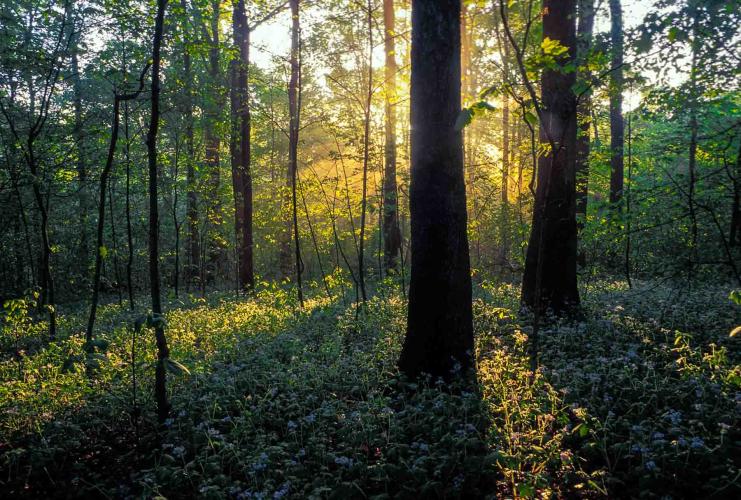
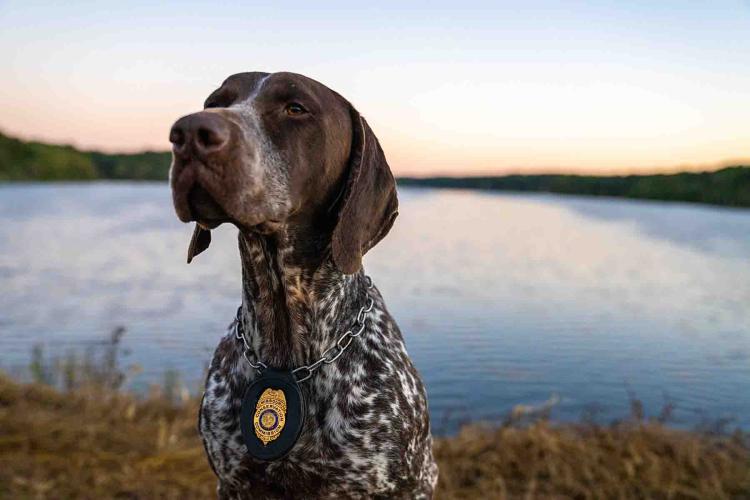
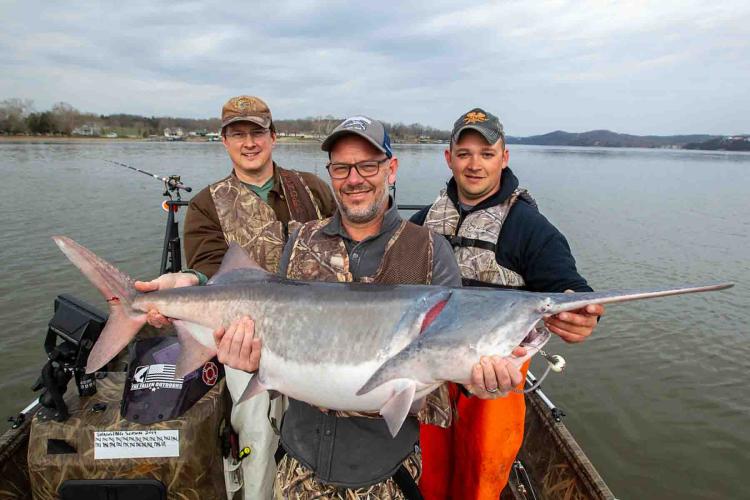



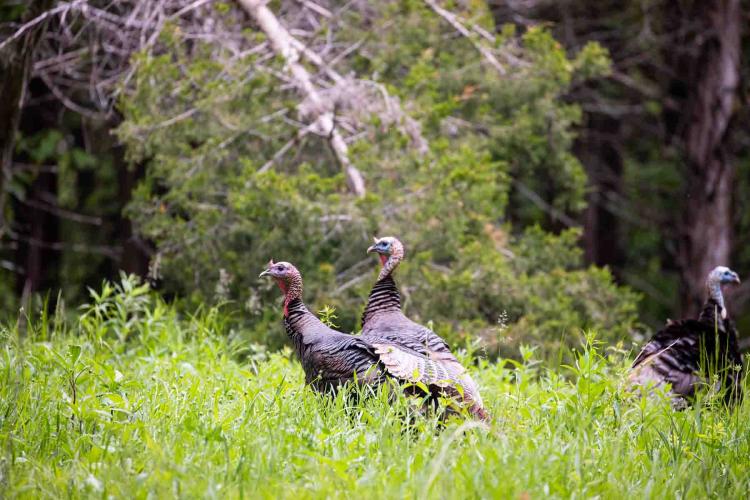



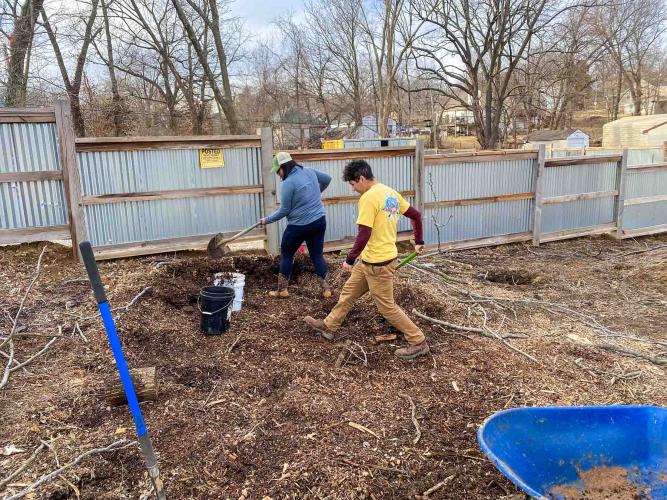


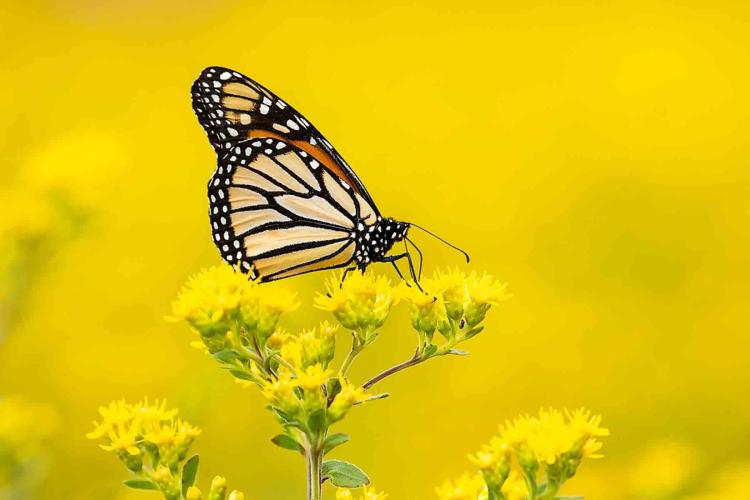



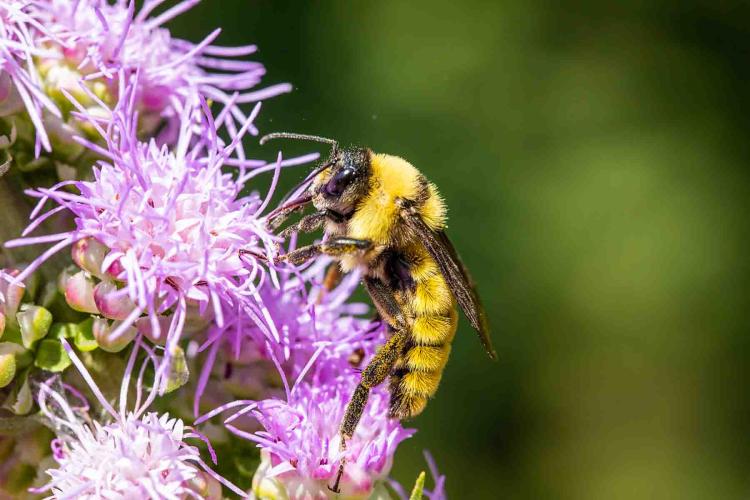
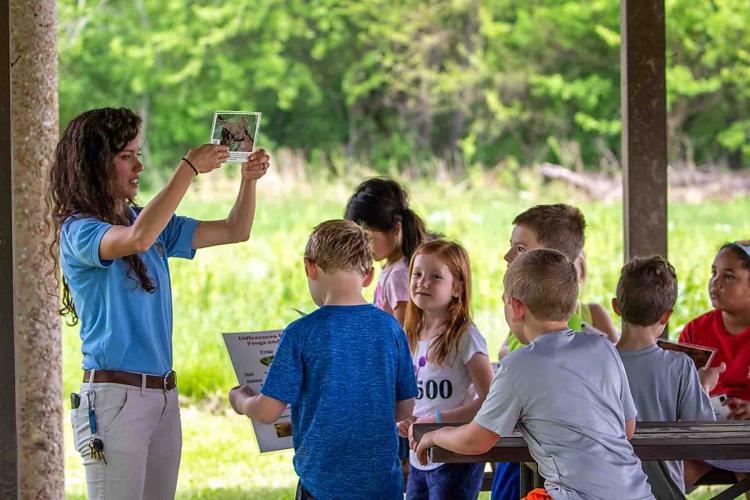


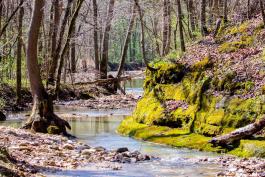





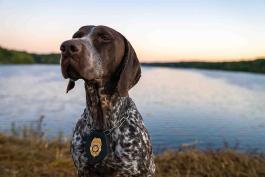





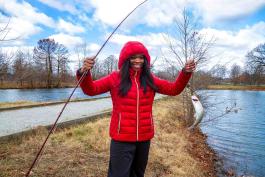







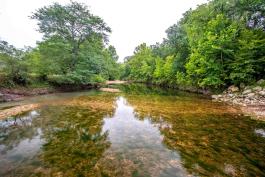

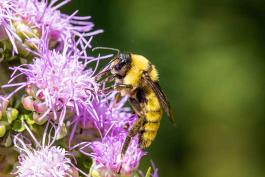



Also In This Issue
And More...
This Issue's Staff
Editor - Angie Daly Morfeld
Associate Editor - Larry Archer
Photography Editor - Cliff White
Staff Writer - Kristie Hilgedick
Staff Writer - Joe Jerek
Staff Writer – Dianne Van Dien
Designer - Shawn Carey
Designer - Marci Porter
Photographer - Noppadol Paothong
Photographer - David Stonner
Circulation - Laura Scheuler






















